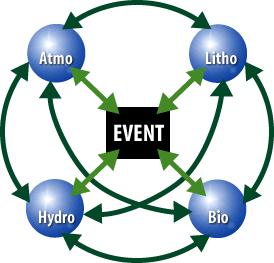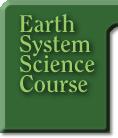Assessment
Overview
Week A: Teacher as Problem Solver—Individual
Private
Theory Assignment & Rubric
Weeks
4, 7, 10, 13
Goal:
Identify what you believe to be true (private theories) and
the reasons for why you have those beliefs.
Background:
The mind is a wonderful thing. As soon as you read or hear
a question, your mind races to make associations, bring prior
experiences to bear, and generate hypotheses. It is said that
"nature abhors a vacuum" and the mind may be no
different.
Piaget
demonstrated that even five year olds have theories about
almost everything. When he asked Swiss five-year-olds, "Which
came first--Lake Geneva or the city of Geneva?" they
each had a theory and reasons for their thinking. "The
city came first, then they built the lake to swim in,"
some said. Or, "They liked the lake so they built a city
around it."
Unless
private theories are revealed and examined, they often remain
intact, in spite of countervailing evidence. Students learn
quickly that "explanation giving" not "theory
building" is required in most classes to be successful.
Students tell teachers what others--the book, the experts,
the teacher--think, not what they think.
What keeps
people from revealing their theories? Often, no one asks about
them. Or, when a theory is revealed, it is critiqued, rather
than explored. People do not want to be wrong. Another reason
is that people may not even be used to examining their own
thoughts and beliefs. Private theories are tenacious, so evolving
them takes time, discussion, and experience, which are often
not the emphasis of the standard curriculum or way of teaching.
To get
your private theories out and well-elaborated, state what
you think. Make that educated guess, search for what "makes
sense" to you, and pull out the reasons for why you think
so. By starting with your private theories, you will be more
actively engaged in supporting, elaborating, or debunking
them. The purpose of this assignment is for you to list what
you already know. You do not need to conduct any research
to do this assignment.
Use the
directions below to complete your private theory assignment.
|
Assignment
(by midnight Wednesday)
Posting
Instructions for steps 1-2
Go
to the Classroom. Click on the event name (Volcanoes,
Coral Reefs, Tropical Forests, Ozone, Global Change)
you are studying in this particular cycle to enter
the appropriate event classroom. Then click on the
Teacher as Problem Solver graphic. |
1.
Post
your list of hypotheses, ideas, or hunches about the
event described in the scenario (PBL Step 2).
2.
List what you know about the event (PBL Step 3) and the
reasons for how you know. Write your information in the
form of an ESS analysis. If needed, refer to the Week
2: The Integration of the ESS Analysis and the PBL Model
reading and the diagram below to get you thinking about the various interactions and
interrelationships that occur between and among the
spheres and event. Don't be concerned if this
particular ESS topic is not one of your strengths; you are here to learn,
and the Earth system science analysis is only the starting
point. The purpose of this assignment is for you to
list what you already know. You do not need to conduct
any research to do this assignment.
Posting
Instructions for step 3
Go
to the Classroom to select the appropriate event
classroom, then click on the Teacher As Problem
Solver graphic. |
3.
Read
your teammates' postings and respond to at least one
teammate's posting. Remember to be curious rather than
judgmental about your teammates' ideas.
|

Rubric
Your individual Week A: Teacher as Problem Solver assignment
corresponds to PBL Steps 1, 2, and 3 and focuses on an Earth
system science event. The rubric below assesses how well you
do PBL Steps 2 and 3 in your effort to get your private theories
out and well-elaborated.
Using
the same rubric that your facilitator will use, you can rate
your attempt to express your private theories. Remember you
are developing your ability and willingness to make your thinking
visible, so you can grow your theories in sophistication and
accuracy.
You can
earn as many as five points for completing this assignment.
You will automatically earn one point for submitting your
assignment on time. See the Time Rubric.
Use the criteria and indicators below to gauge your success
in earning the remaining four points.
| Rubric
Criteria:
What
you really believe to be true, "I think..."
|
4
Rating:
A
clear and focused hypothesis of your beliefs about the
relationships in
Earth systems. |
3
Rating:
A
hypothesis summarizing what you believe to be true about
ESS relationships.
|
2
Rating:
A
clear statement of what you believe
to be true about some
of the relationships.
|
1
Rating:
A
description of some things you know. |
| Rubric
Criteria:
Supported
by reasons, "Because..." |
4
Rating:
Your
thinking is visible with clear ESS explanations or assertions
in support of your hypothesis.
|
3
Rating:
Your
hypothesis is supported with some ESS explanations or
assertions. |
2
Rating:
Some
reasoning behind what you believed is revealed. |
1
Rating:
Some
reasons given for how you know what you think you know. |
| Rubric
Criteria:
Uses
what you currently know, "These reasons come from..."
|
4
Rating:
Relevant
knowledge and reasons from multiple sources and examples
from your experience. |
3
Rating:
Relevant
knowledge and reasons from a few sources and/or relationship
to experience. |
2
Rating:
Relevant
knowledge is supported by at least one reason or some
relationship to experience. |
1
Rating:
Some
related experiences and references or schooling is given. |
[
Welcome ] [Earth's
Spheres] [ Earth System Science
] [ PBL Model ] [ Use
of Technology ] [ Science as Inquiry
] [ Participation ] [ Assessment
Overview ] [ Course Sections
]
[ Home ] Intro [ Guide
] [ Outline ] [ Classroom
]
HTML
code by Chris Kreger
Maintained by ESSC Team
Last updated August 15, 2000
Privacy
Statement and Copyright©
1997-2000 by Wheeling Jesuit University/NASA Classroom of the Future™. All
rights reserved.
|



